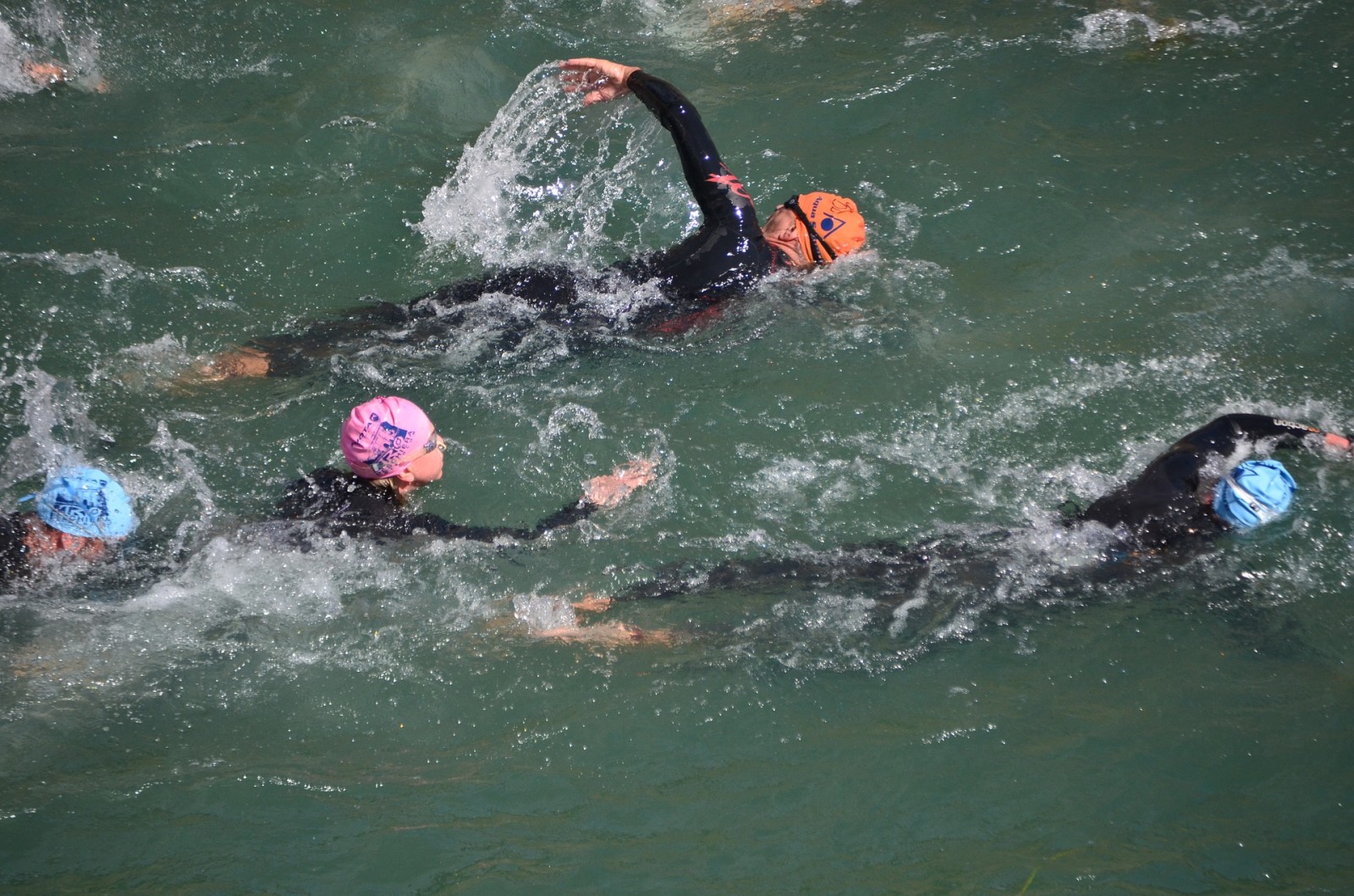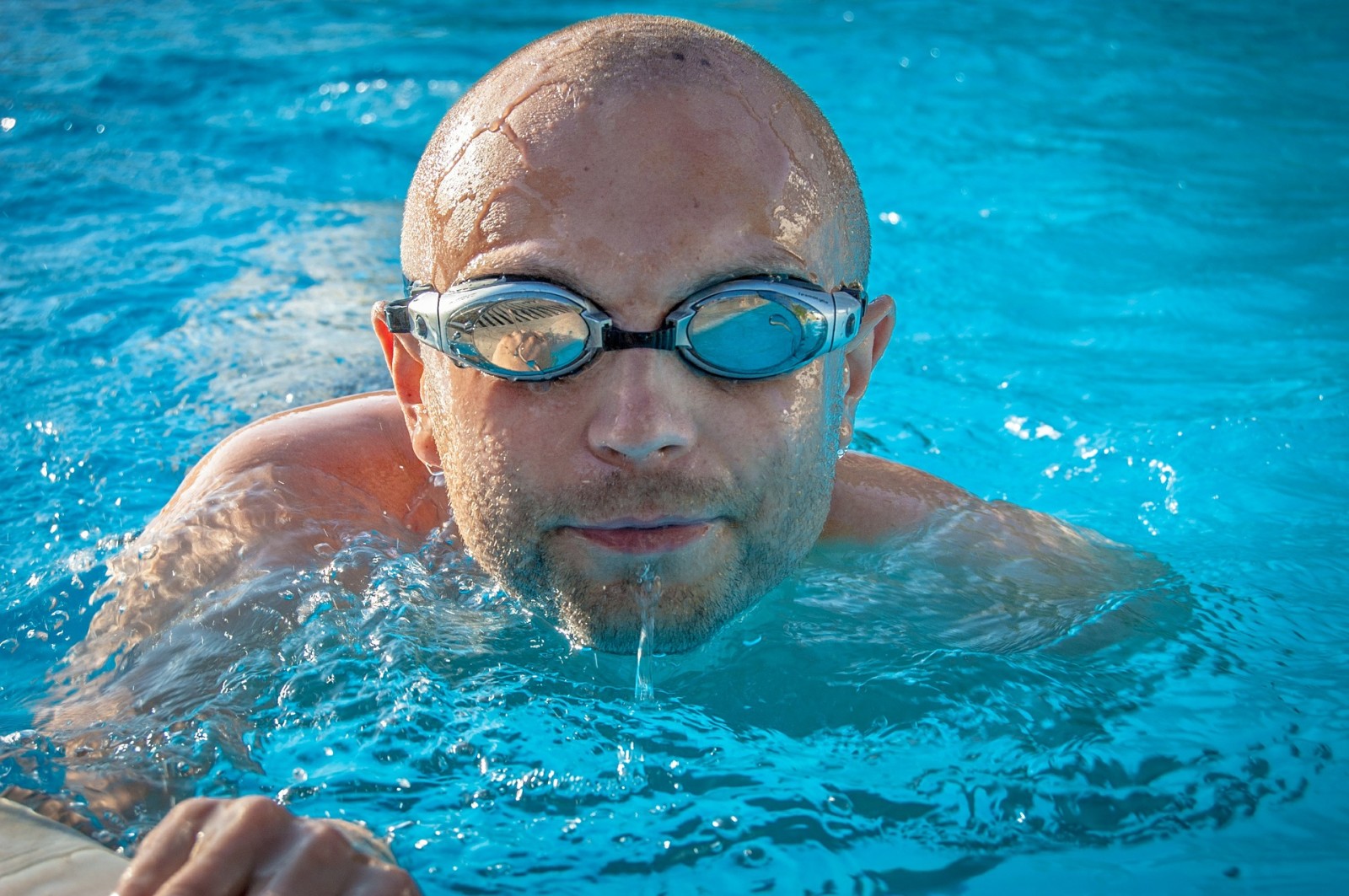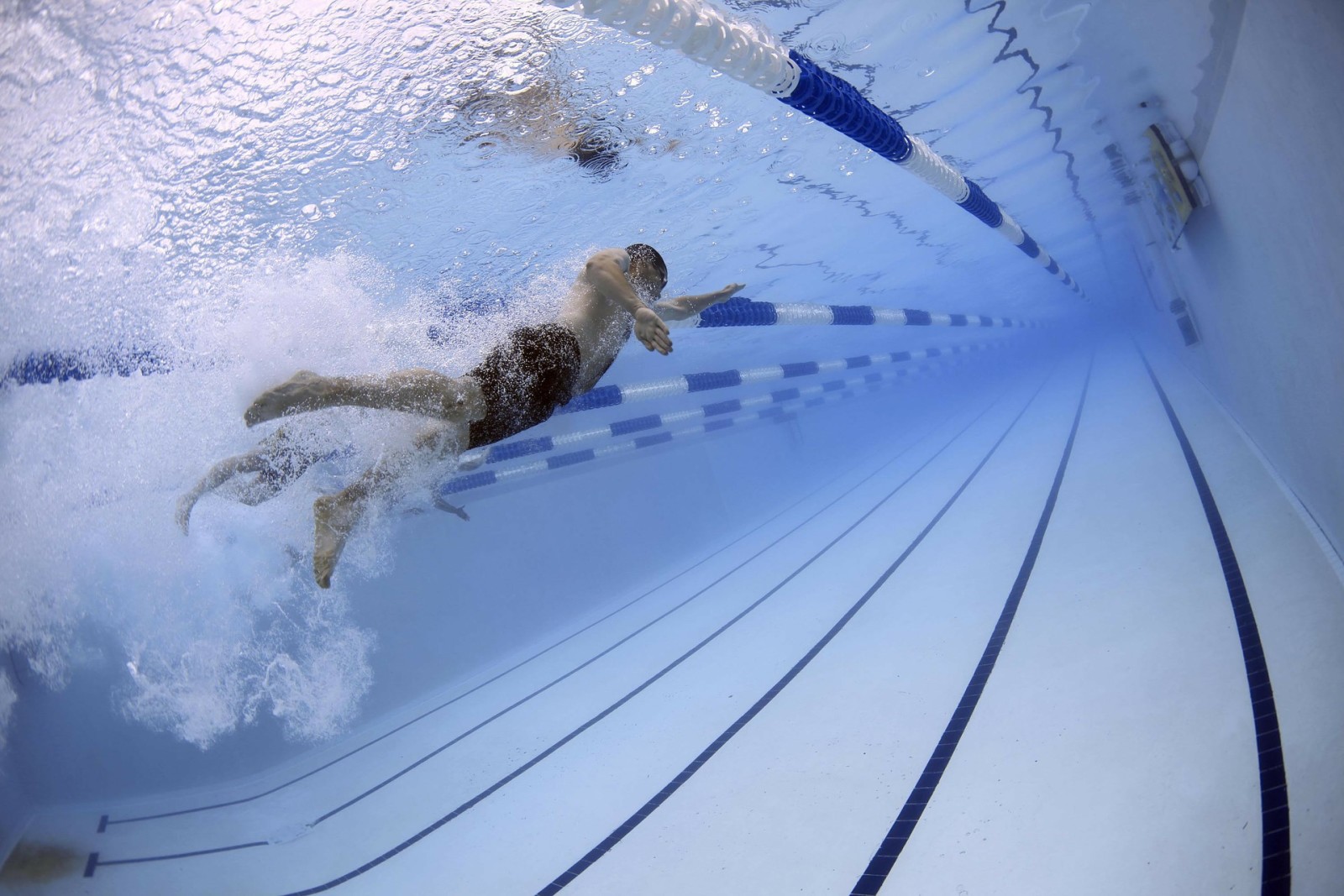Training for a triathlon means focusing on three different aspects of the race: the swim, the bike, and the run.
There’s a saying amongst triathletes that I heard early on in my days of competition that has always made me giggle.
Swimming is the worst part of triathlon. Think about it, if you stop pedaling on the bike, you coast. If you stop running, you walk. But if you stop swimming, you drown.”
It’s meant as a joke, but there are definitely some serious undertones. While we might fear sharks, jellyfish or zombies in the water (oh, is that just me?), a very small percentage of deaths during races is actually due to inexperience and panicking during the swim portion of the race. The key to successful participation in any sport is training and preparation, and the swim leg in triathlon is no exception.
Putting in time in the pool and getting extremely comfortable in the water is an important first step in training for a triathlon.
However, the difference between just finishing a race and giving your best performance is all in the details, so we’ve consulted three swim experts to discuss the specific ways triathletes should train and drills to include in your practice to have you ready to “just keep swimming” come race day.
Training for a Triathlon: Conquering the Swim
Tip #1: Swim. Swim. Then Swim Some More
USAT Level 1 Triathlete coach and head swim coach for women’s triathlon club SheJAM’s Kelsey Abbott emphasizes the importance of swimming as part of your training.
“Swim as much as possible,” she says. “Swim in open water and in pools. Swim with people. Practice swimming very close to people. Learn how to draft.”
Some triathletes tend to neglect swimming while training for a triathlon until the race is looming, but Abbott advises against that.
“Because the swim is the shortest leg in a triathlon, a lot of triathletes think they can better use their training time on the bike and the run,” she says. “Here’s the deal: Swimming will help your swim, your bike and your run. Biking will help your biking and maybe your run. Running will help your run, but has the highest risk of injury.”
And for athletes who have anxiety about open water swimming, she recommends swimming even more.
“Emotions run high at the start of a race, especially in sketchy water,” she says. “Get comfortable enough in the water that you can respond instead of react when something doesn’t go as planned.”
Tip #2: Focus on Power, Not Pretty
Tim Snow, the director of training services for Q2 systems who holds multiple coaching certifications including QT2 Level 3 and USAT Level 2 Coach, recognizes there are some pretty significant differences between pool swimming and triathlon swimming.
“Triathlon swimming is a contact sport, in an uncontrolled environment,” he says. “You are being assaulted by those around you, along with the water. It comes from all angles! It’s almost like playing hockey, with checking allowed!”
Because of the nature of the triathlon swim, especially on the start, he suggests training differently.
“The preparations must be different,” he says. “Vastly different? Not necessarily. But, different.”
He suggests that while a gliding swim stroke is lovely in the pool, it won’t get you far in open water. His recommendation? Utilize a higher turnover to propel yourself through the water and fend off would-be attackers.
“I always think of Lisa Simpson, whenever she fights with Bart,” he says. “She just swings her arms, incessantly. That is pretty similar to [open water swimming]. Why? Two reasons. First, it fights the chop of the water. A long stroke in choppy water will just get hit and pushed backwards. The high turnover cruises right through that. Also, with a couple hundred of your closest friends swarming around you, the high turnover serves as a protective measure. People will avoid that.”
Abbott agrees with him, and adds, “Gliding in your freestyle may look beautiful in the pool, but it won’t be helpful when you’re swimming into waves. Get as much power as possible from each stroke, but keep your stroke rate high.”
Tip #3: Settle Your Breathing
Jackie Miller, USAT Ironman University, and Outrival Racing-certified coach works with her athletes not just to train for the appropriate distances, but to understand how their bodies will likely respond to the excitement and stress of race day.
One important aspect to practice, she says, is to “settle your breathing.”
“At the start of a triathlon, heart rates are very high, the start of the swim is very rough and breathing can get out of control quickly,” she says. “One must learn how to handle a high heart rate and settle their breathing down after the start of the race.”
There are several ways to practice that, and one way is through exposure.
“An athlete needs practice in open water situations in addition to logging lots of hours in the pool,” Miller says. “The open water is a ‘real life’ situation and it is extremely important for triathletes to not only master open water swimming but also become comfortable with it.”
Tip #4: Practice Open Water & Race Day Conditions
Miller programs pool-based swim workouts for her athletes with the drills we’ll reveal below, but she also says that it’s important to practice open water drills as well.
Her favorite?
“During open water practice, I like to have athletes do rounds of running into the water, practicing entry, swim FAST straight out about 50 strokes, turn around, swim back, exit water, run up the beach, and back in. Repeat, approximately 4 to 5 rounds, without rest unless they absolutely HAVE to,” she says. “This helps them to learn how to swim hypoxically, like at the start of a race, teaches them to settle their breathing as well as entry, exit and that after swim transition run.”
(Oh, and for the record, she’s MY coach for Ironman Florida. Start pitying me at any time now.)
5 Swimming Workouts for Training for a Triathlon
It’s pretty clear that in order to be a better swimmer you need to (duh) swim more. Our experts recommend getting in open water to develop those unique skills, but they also recommend a lot of pool time to build up the strength and endurance necessary to complete the distance required for your race.
To mix up your training, perfect your form, and have you as ready as possible for race day, add in these five drills to your swim workouts.
1. Superman
Abbott stresses the importance of a strong and comfortable posture in the water to be at your most effective while swimming.
“Lie face down, with your arms straight out from your shoulder — arms straight, NOT in streamline — and keep your whole body at the surface of the water and kick,” she says. “You won’t move quickly in this drill — it’s not about the kick — but you will learn great posture that will make you feel like you’re flying when you do freestyle. To breathe, lift your head to take a breath. This will break your posture so you will have to find it again. Every time you re-find that posture, you’re creating muscle memory.”
2. Ankle Tie
In the pool, my favorite drill is the Ankle Tie.
“Athletes tie their ankles together with either an old bike tube or an ankle tie they’ve purchased,” says Miller. “There are many benefits of this drill including using the core and upper body helps the athlete in a multitude of ways, with strength, body position and learning to engage the core.”
3. Agility Paddle Drills
While Snow emphasizes that every swimmer is different, most have some common technical tweaks that they can make to improve their form. By incorporating Agility Paddles into swim training, he “helps athletes remove the STOP sign that occurs in their swim stroke just after entry and before the catch.”
Not sure what he means? “If you are acting like a member of The Supremes while swimming these paddles will help to cure you of that!,” he says. “They will just fall right off of your hands.” Try adding in sets of 100-400 with the paddles focusing on form. It may be helpful to use a pull buoy between your legs so that your concentration can be solely on your entry and pull.
4. Fist Drill
The fist drill (i.e. swimming with your hand in a fist) is a great way to “remind athletes that they HAVE a hand,” Snow says. This is an excellent drill to both improve your elbow position, as you’ll need to use your forearm and entire lever to propel yourself through the water, and it will create more awareness on the strength of your hand when you pull.
5. Press Your Buoy
A popular swimming technique and coaching service, Total Immersion, uses the concept of “pressing your buoy” to illustrate how your body should be situated in the water. Very simplified, it’s the notion of pressing your chest down rather than kicking your legs up when you swim. If he had to choose, Snow said he would recommend this drill for most athletes.



